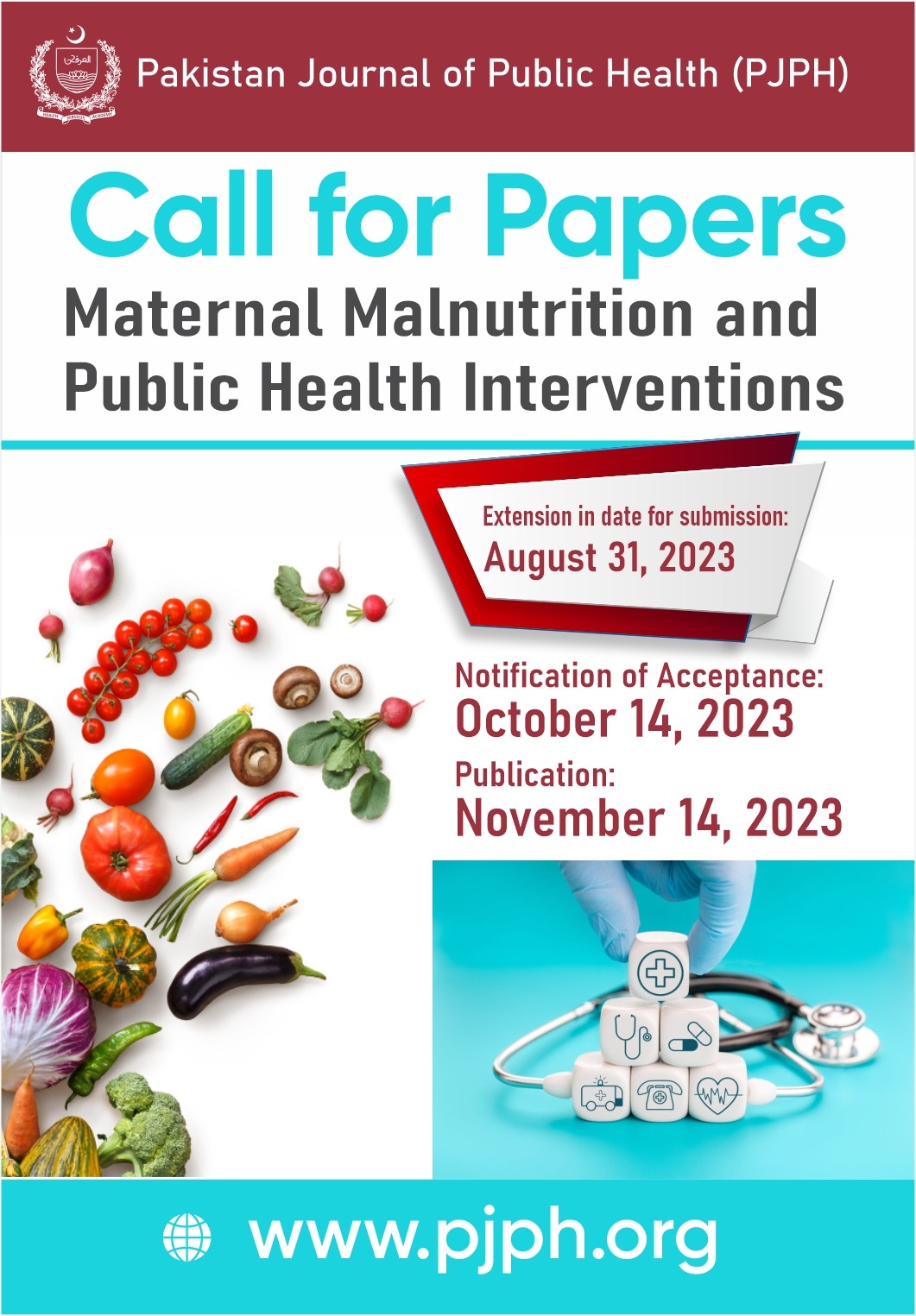STUNTING AMONG CHILDREN OF 18 TO 36 MONTHS OF AGE IN BHAWALGHAR VILLAGE, DISTRICT LODHRAN: A CROSS-SECTIONAL STUDY
DOI:
https://doi.org/10.32413/pjph.v7i1.25Keywords:
Stunting, nutrition, rural community, developing countryAbstract
Background: Stunting is chronic restriction of growth in height indicated by low height-for-age. It is a reliable indicator of long-term under nutrition among young children. Stunted children are more prone to communicable diseases. The main causes of stunting are not providing proper nutritious food, not enough food and of poor quality, improper feeding practices and different infections including malaria, ARI and diarrhea. We conducted this survey to determine the frequency and determinants of stunting among 18 to 36 months old children in Bhawalghar Village, District Lodhran
Methods: We did cross-sectional study in Bhawalghar village of district Lodhran. All of the children from 18 to 36 months of age were included in this study from two randomly selected clusters.
Results: Gender, parental education, income, type of housing, vaccination coverage, parity of women, height of child and number of food items were identified as determinants of stunting. There was a statistically significant relationship between stunting and the study variables. We found that about half (48%) of the children of age 18-36 months living in Bhawalghar Village, District Lodhran were stunted.
Conclusions: Stunting is a major problem among the children of rural Punjab, Pakistan. There is a dire need to improve the nutritional status of the children in this region.






